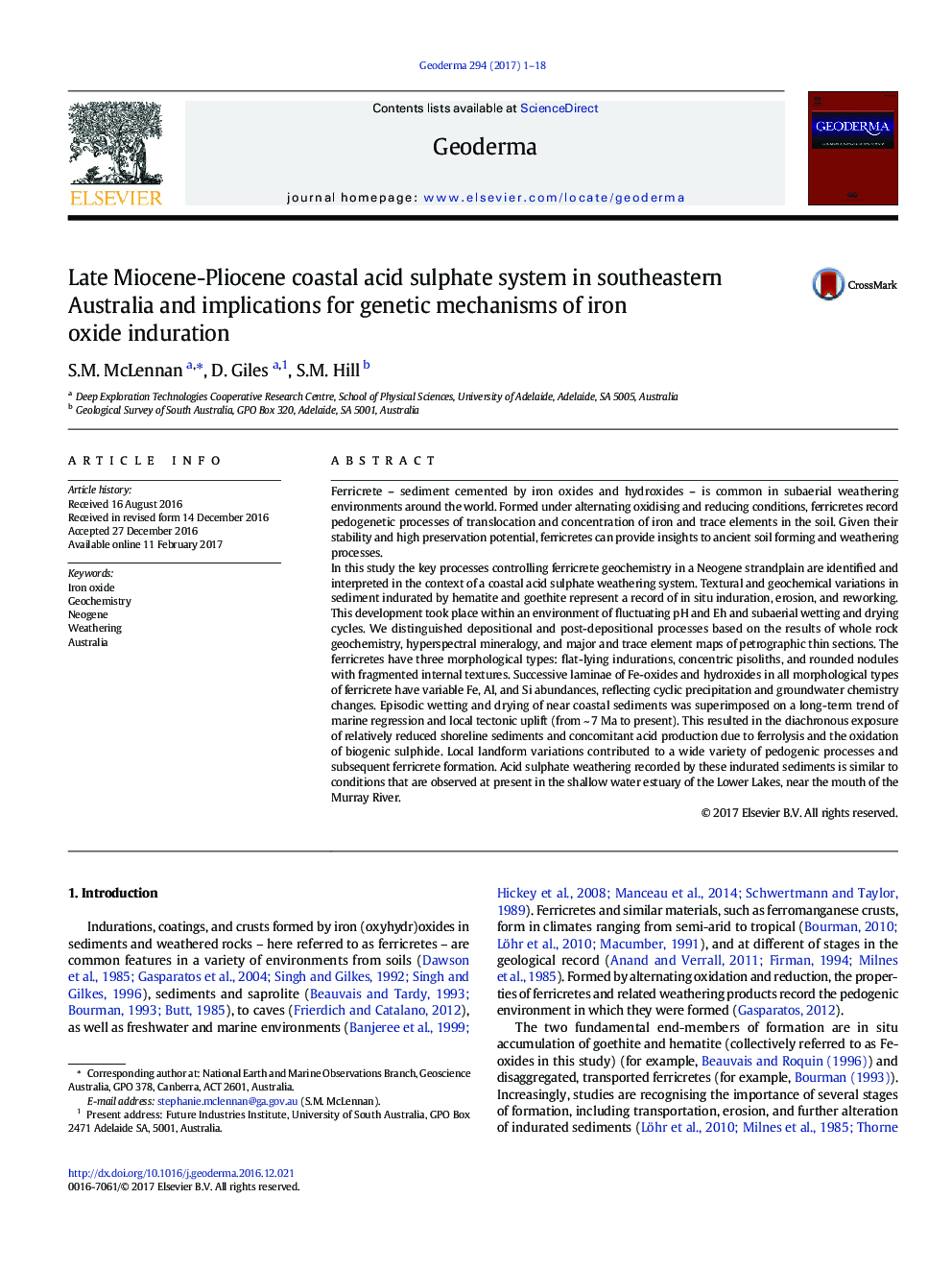| کد مقاله | کد نشریه | سال انتشار | مقاله انگلیسی | نسخه تمام متن |
|---|---|---|---|---|
| 5770385 | 1629423 | 2017 | 18 صفحه PDF | دانلود رایگان |
- Genetic mechanisms of ferricrete were determined from spatial element distribution.
- Morphology and geochemistry of ferricretes are controlled by formation conditions.
- Neogene ferricretes record a coastal acid sulphate system and physical reworking.
Ferricrete - sediment cemented by iron oxides and hydroxides - is common in subaerial weathering environments around the world. Formed under alternating oxidising and reducing conditions, ferricretes record pedogenetic processes of translocation and concentration of iron and trace elements in the soil. Given their stability and high preservation potential, ferricretes can provide insights to ancient soil forming and weathering processes.In this study the key processes controlling ferricrete geochemistry in a Neogene strandplain are identified and interpreted in the context of a coastal acid sulphate weathering system. Textural and geochemical variations in sediment indurated by hematite and goethite represent a record of in situ induration, erosion, and reworking. This development took place within an environment of fluctuating pH and Eh and subaerial wetting and drying cycles. We distinguished depositional and post-depositional processes based on the results of whole rock geochemistry, hyperspectral mineralogy, and major and trace element maps of petrographic thin sections. The ferricretes have three morphological types: flat-lying indurations, concentric pisoliths, and rounded nodules with fragmented internal textures. Successive laminae of Fe-oxides and hydroxides in all morphological types of ferricrete have variable Fe, Al, and Si abundances, reflecting cyclic precipitation and groundwater chemistry changes. Episodic wetting and drying of near coastal sediments was superimposed on a long-term trend of marine regression and local tectonic uplift (from ~Â 7Â Ma to present). This resulted in the diachronous exposure of relatively reduced shoreline sediments and concomitant acid production due to ferrolysis and the oxidation of biogenic sulphide. Local landform variations contributed to a wide variety of pedogenic processes and subsequent ferricrete formation. Acid sulphate weathering recorded by these indurated sediments is similar to conditions that are observed at present in the shallow water estuary of the Lower Lakes, near the mouth of the Murray River.
Journal: Geoderma - Volume 294, 15 May 2017, Pages 1-18
